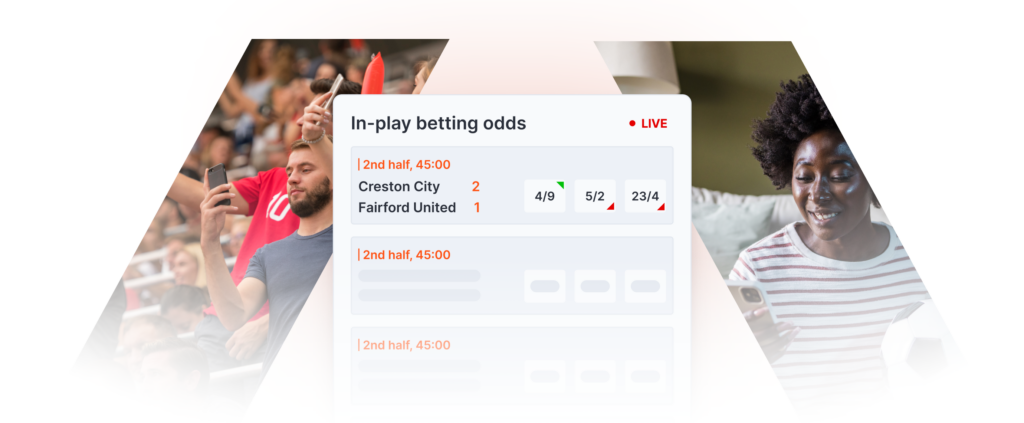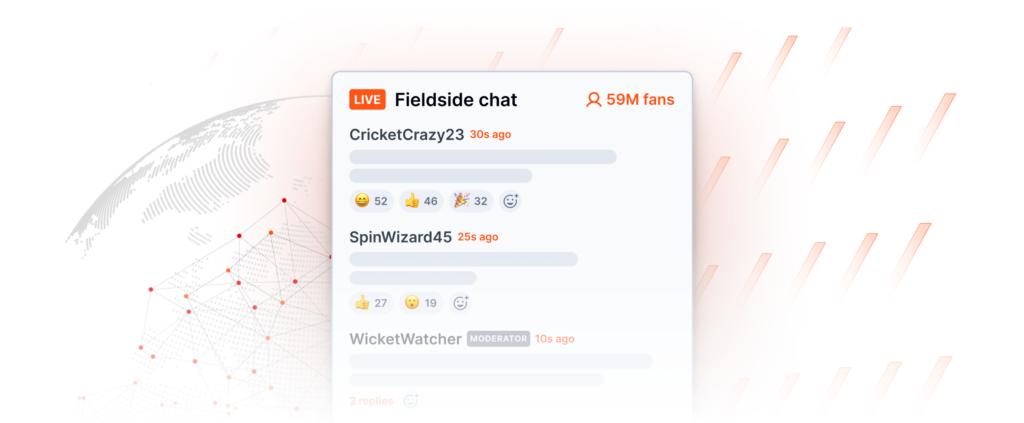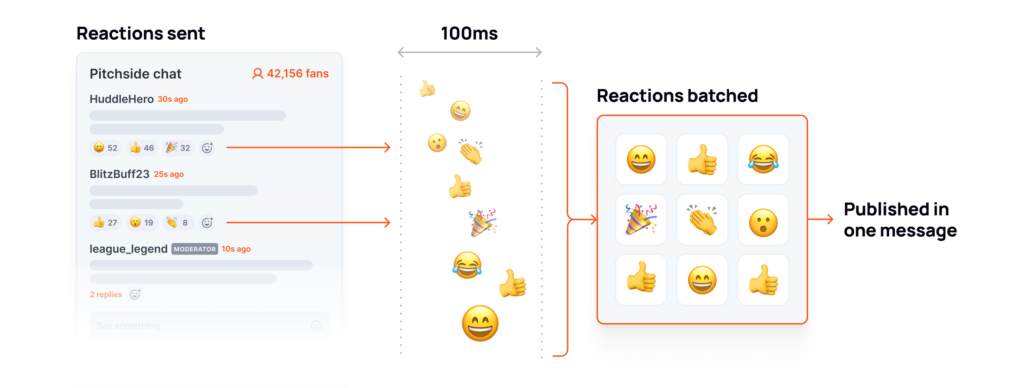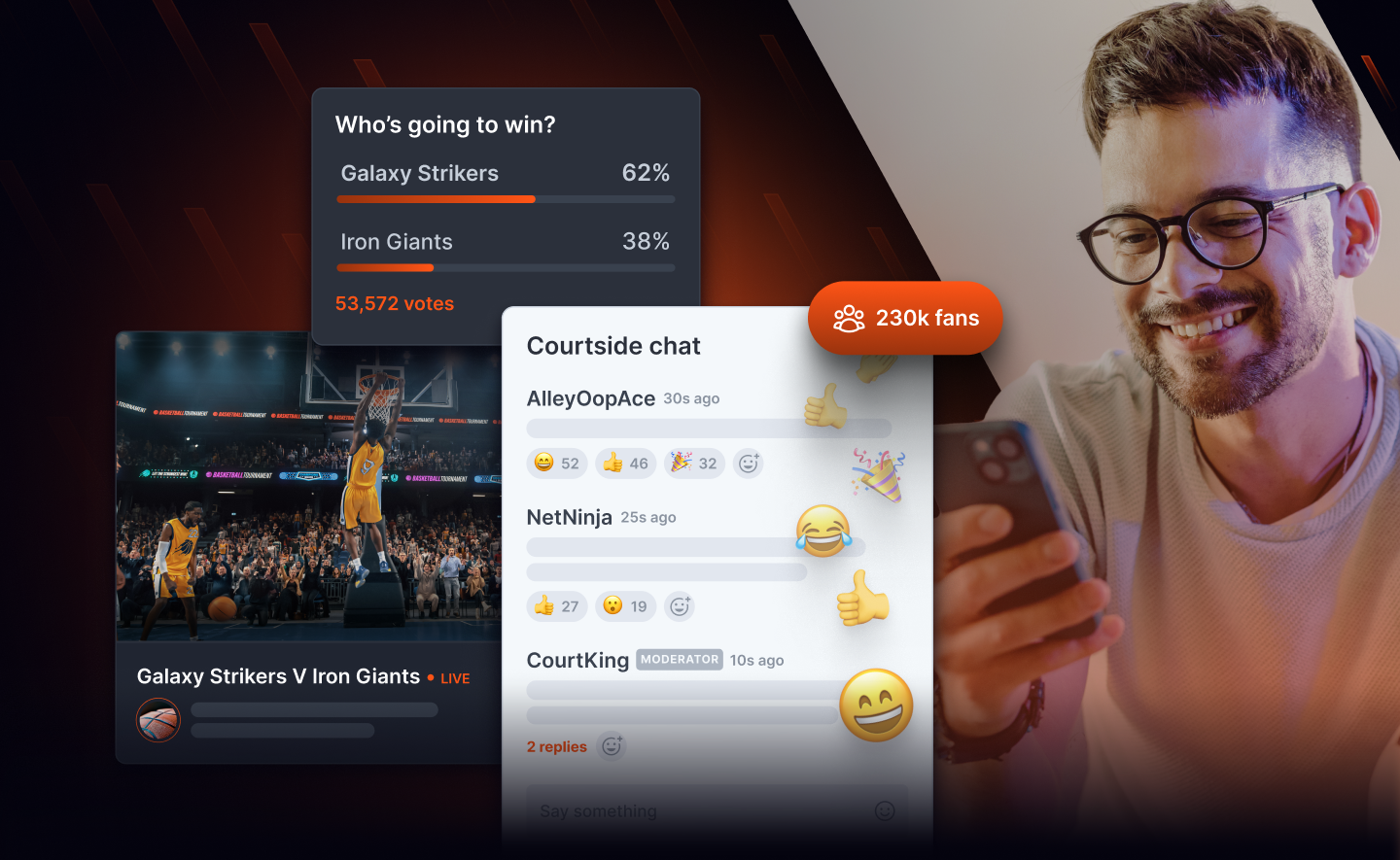All The Essential Sportstech News Right Here…
Continue readingKeep Your Eye on Blockchain
Last week Stripe, the payment platform, agreed to buy Bridge Network for the rather unicorn-sized sum of $1.1 billion. This figure would eye-watering enough – but it is also based on a 200% increase in valuation since August.
Continue readingAccess Innovation Newsletter Summary – 24.10.2024
All The Essential Sportstech News Right Here…
Continue readingAI In Sports Is A Bit ‘Last Christmas’
The funniest WhatsApp I saw last week was when one wit stated: ‘These days, avoiding AI at a sports conference is like playing Whamageddon at Christmas.’
Continue readingAccess Innovation Newsletter Summary – 17.10.2024
All The Essential Sportstech News Right Here…
Continue readingTop Tips for Crafting a Standout Sports Technology Awards Submission
Each year, there are a few common questions about how to make submissions in The Sports Technology Awards truly shine. To help, here are our top tips to ensure your work stands out and catches the judges’ attention:
1. Nail the Category Criteria
It sounds obvious, but fully understanding what each category asks for will help you write sharper, more relevant answers. This not only impresses the judges but also ensures you’re entering the category best suited to your work.
The entry form is clear, but if you’re unsure, reach out to us—we’re here to help maximize your chances of success.
2. Keep Your Language Clear and Focused
We see two common pitfalls that are easy to avoid…
- International entries sometimes lose meaning in translation so be sure your entry says what you really need it to
- Avoid use of superlatives like “tremendous” or “astonishing” the judges want facts. if your work is great, the judges will appreciate it.
With a limited word count, stick to the facts. A clear, concise form is always more compelling. It is always a good idea to have someone proofread to ensure your submission reads well.
3. Start Early to Finish Strong
Completing your entry doesn’t take long once you have all the information ready. Block off 30 minutes to familiarize yourself with the form and gather what you need—logos, team inputs, payment details, etc. Give yourself time to chase down any missing pieces and then set aside 90 minutes to complete your entry. This ensures a smooth process and avoids last-minute fees and pfaff.
4. Customize Each Entry for Multiple Categories
If you’re entering multiple categories, take the time to tailor each submission. Judges may see your work in several categories, and they’ll notice if you’ve simply copied and pasted and it might undermine what you’re saying. A tailored entry for each category will resonate more and increase your chances of success.
5. Hard Data Makes for Stronger Entries
Our judges sign NDAs, so feel confident sharing detailed information. Where possible, use solid numbers over vague percentages or general endorsements. Strong facts make for a more compelling case!
6. Being Shortlisted is a Major Achievement
Don’t miss the opportunity to celebrate if you make the shortlist—it’s no small feat! The competition is tough, and the difference between winning and placing second can be the matter of a point or two! A spot on the shortlist is a significant success well worth promoting.
Our judges are passionate about recognizing excellence, so if you have any questions about your entry, let us know! We believe that stronger entries lift the competition as a whole—good luck!
Are Tech-Enabled World Records the Wrong Sort of Dopamine?
When Ruth Chepngetich won the Chicago Marathon last Sunday, she did so in a staggering, record- breaking time of 2.09.56.
Continue readingAccess Innovation Newsletter Summary – 10.10.2024
All The Essential Sportstech News Right Here…
Continue readingMaximizing ROI in Fan Engagement: The Four Pillars of Effective Realtime Experience Platforms
By Matthew O’Riordan, CEO and Co-founder of Ably
Today’s fans often live far from their favorite teams, sports stars, or artists, and want to find a way to engage virtually. In fact, 99% of NBA fans worldwide will likely never set foot in an arena. And these trends are reshaping fan behaviors and expectations.
Meeting the growing demand for globally available interactive experiences is a top priority for fan-centric businesses. However, success requires the right technology. In this article, we outline the key requirements of a modern realtime experience platform, to help you make the best choice when selecting this critical technology.
What to look for in a modern realtime experience platform
Through our work with clients like NASCAR, Genius Sports and Stadion, we’ve identified four essential requirements for any modern realtime experience platform:
- Realtime. All the time.
- Built for scale.
- Designed to maximize ROI.
- Composable realtime services.
Let’s dive into each of these key points, considering both the infrastructure and expertise needed to meet them.
1. Realtime. All the time.
Whether fans are watching the game in a stadium or remotely, they want the live event experience. This means all data, from chat messages to betting odds, must be delivered with minimal latency.
Every user that opens an app expects instant updates. For the experience to feel live and “instantaneous”, updates need to be received within 100 milliseconds or less. Low latency is also required to minimize risks – for example, in-play betting depends on highly reliable, predictable performance. If data arrives late, players could bet on events that have already happened, costing operators financially and reputationally.

But platforms not only need to deliver the lowest possible latency, they need to do it with consistency and predictability, and provide a low median global latency. This allows developers to build and scale features with confidence.
2. Built for scale
Data volumes have surged in recent years, in part due to the record-breaking levels of concurrent viewership seen in sports like Indian cricket. For example, the 2023 men’s final set a streaming record with a peak concurrent audience of 59 million viewers.
This increasing demand means that modern realtime experience platforms must be capable of scaling to extreme levels, especially when it comes to fan engagement. Their infrastructure must be highly reliable, always available, and—critically—elastic. Let’s explore each of these in turn.
Reliability
Fan engagement experiences are typically driven by “spiky” events like goals or key plays, and reliability during these moments is critical. It’s what keeps fans engaged, boosts retention, and creates monetization opportunities. To prepare for such moments, businesses must ensure their infrastructure can handle peak usage without compromising performance.
Ideally, you should choose a platform designed in a way that expects failures, and can operate during them. Data centers can fail, fires can break out, or fiber lines can be cut—and you need to ensure continuous operation anyway.
Availability
Availability means having enough capacity to handle spikes in usage during those critical moments—like when a goal is scored or the final set of a tennis match begins—while still delivering a high-quality live experience. Managing this kind of availability on your own often requires balancing the system’s operating costs with the capacity needed for peak moments.
Thankfully, the best modern fan engagement platforms will have spare capacity that you can tap into. Meaning they are set up to absorb even the most demanding, unexpected spikes in traffic.
Elasticity
Elasticity refers to the ability of infrastructure to grow and shrink dynamically based on demand. This is especially important in sports, media, and entertainment apps, where user bases can fluctuate dramatically depending on current events or trends.

Delivering elasticity in realtime platforms is challenging because live updates are resource-intensive. The user load can increase dramatically during major events, and if the system doesn’t automatically scale to meet this demand, users can experience delays or outages, breaking the experience.
Manual interventions to add capacity can work in some cases, but they aren’t recommended for fan experiences, which require instant, automatic scaling.
3. Designed to maximize ROI
Handling large-scale viewership and fan engagement isn’t just about meeting technical challenges; it’s also about maximizing return on investment (ROI). Fan interactions generate huge volumes of data, and this growth in data can lead to rapidly increasing costs. If left unchecked, the cost of delivering live fan experiences could outpace the potential profits, making it unviable.
To keep these experiences profitable, businesses must choose a technology that offers flexible design patterns to optimize spending. There are three main ways to achieve this:
- Batching: Deliver groups of messages together instead of sending each message individually, which reduces the number of transmissions.
- Aggregating: Only send updates that represent a change, rather than broadcasting every small piece of data.
- Partitioning: Break large audiences into smaller sub-groups to deliver more efficient, targeted data.
These techniques help reduce the overall data load without affecting the fan experience. For instance, while live scoring may require ultra-low latencies, less critical features—like emoji reactions—can use batching to reduce costs without hurting the user experience.

Understanding when and how to apply these strategies can be the difference between a profitable fan engagement experience and one that drains resources.
4. Offering composable realtime services
A robust realtime platform that offers a diverse set of tools and capabilities is essential for delivering engaging and interactive experiences in today’s digital landscape. Beyond core features like chat, successful implementations often require a combination of live updates, data broadcasting, notifications, collaboration tools, and more.
Relying on specialized, single-purpose platforms can be limiting in this context. To create truly immersive experiences, businesses often find themselves piecing together multiple solutions, leading to increased complexity and costs. Building these capabilities from scratch is even more resource-intensive, diverting focus from core product development. Conversely, a comprehensive realtime platform will offer a suite of products that you can ‘mix and match’ enabling the necessary flexibility to innovate and deliver exceptional user experiences.
Delivering modern fan engagement experiences with Ably
At Ably, we’ve built our platform to meet the growing needs of fan engagement in sports, media, and entertainment while also providing a healthy ROI. Some of our standout features for fan engagement include:
- Built for scale: Elastic and highly-available. Our platform is built to handle extreme scale and high concurrent connections. Delivering updates to millions of clients in milliseconds, and handling even the largest traffic spikes.
- Reliability guarantees: Designed to preserve continuity of service, we ensure sufficient redundancy at a regional and global level.
- Data integrity guarantees: Ensure that messages are delivered in the correct order and only once, avoiding duplicate deliveries that could undermine the fan experience.
- Cost optimization features: With batching, subscription filters, and bandwidth-efficient deltas that enable you to only broadcast the data that has changed, it is easy to optimize your costs, and performance.
- Usage-based pricing: Pay only for what you use, giving you control over costs and helping you plan for traffic surges during peak events.
- Large presence sets and occupancy: Support for large chat rooms with high concurrency, ensuring all fans are aware of others in the room in realtime.
The right realtime experience platform can help you to deliver rich, engaging fan experiences that scale effortlessly, meet fan expectations, and remain economically viable. So get in touch or sign up to try Ably for free.
About the author

Matthew O’Riordan is the CEO and technical co-founder of Ably. Matthew has been a software engineer for over 20 years, many of those as a CTO. He first started working on commercial internet projects in the mid 1990s, when Internet Explorer 3 and Netscape were still battling it out. Whilst he enjoys coding, the challenges he faces as an entrepreneur starting and scaling businesses is what drives him. Matthew has previously started and successfully exited from two tech businesses.
To NFT or Not to NFT – Is it Still a Question?
So, has Paris 2024 jumped on a bandwagon that looked like it had already departed?
Continue reading









